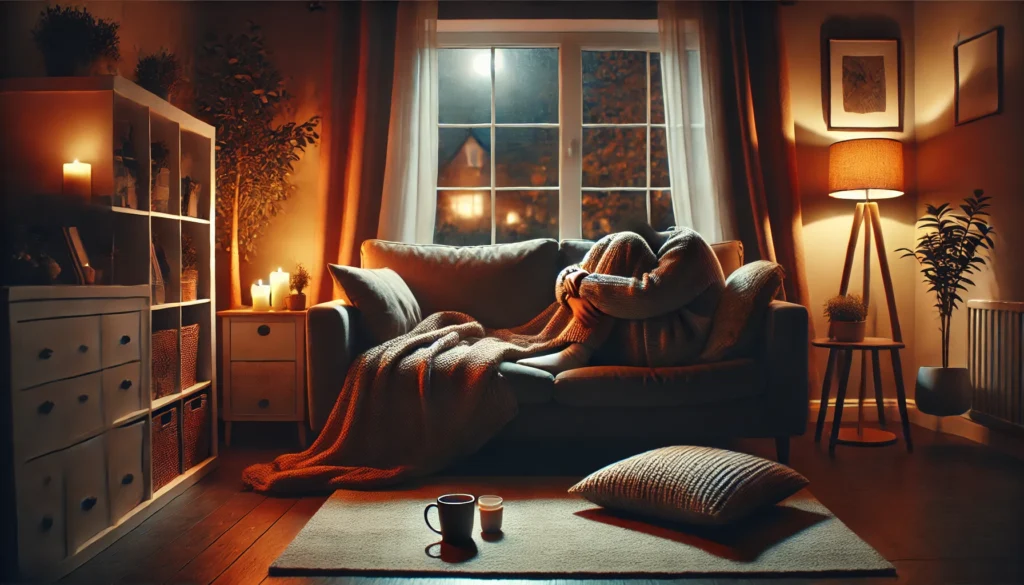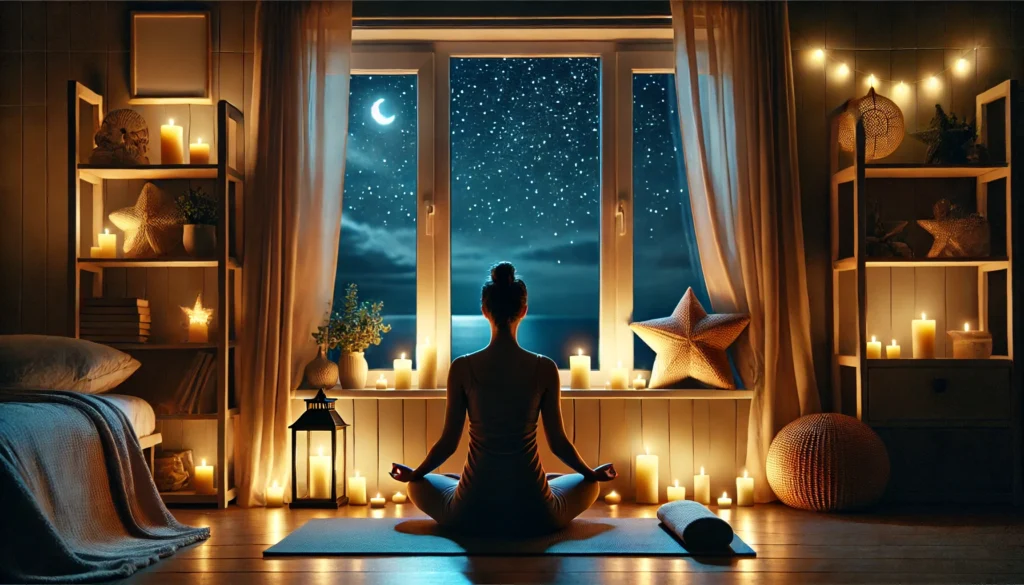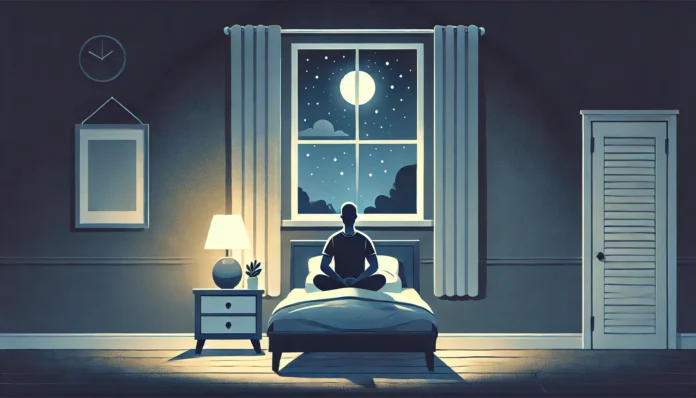Understanding the Unique Challenge of Nighttime Panic Attacks
When anxiety comes crashing in during the stillness of night, the experience can be particularly disorienting. Unlike daytime episodes, which may be buffered by activity, distraction, or social support, nighttime panic attacks strike when the world around you is quiet and dark. The absence of light and sound can amplify internal sensations, making them feel more alarming than they might during the day. For many people, panic attacks at night seem to arrive out of nowhere, jolting them out of sleep with a racing heart, chest tightness, shallow breathing, or an overwhelming sense of dread. It can feel like waking into a nightmare you can’t escape from, even though your eyes are open.
You may also like: Proven Relaxation Techniques for Stress and Anxiety: Evidence-Based Strategies to Calm Your Mind and Body
This nocturnal form of panic can be profoundly destabilizing. The quiet of night removes the usual tools people often reach for in moments of anxiety—such as calling a friend, taking a walk, or engaging in a calming activity. In the middle of the night, those options are limited or entirely unavailable, which can reinforce a sense of helplessness. As a result, many individuals begin to fear going to sleep altogether, anticipating that anxiety will strike as soon as their head hits the pillow. This leads to a vicious cycle: fear of panic keeps you awake, and exhaustion then makes your mind more vulnerable to stress.
It’s crucial to understand that panic attacks at night are not random or meaningless. They often stem from underlying anxiety disorders, accumulated daytime stress, or unresolved emotional trauma. Even seemingly dormant worries can reawaken in the dark, when your brain has fewer external tasks to focus on and more room for unconscious material to surface. Understanding why these episodes occur—and how they differ from other forms of anxiety—is the first step toward regaining a sense of control. Knowing how to calm a panic attack at night starts with this kind of insight: recognizing that the attack is not dangerous, and that effective, evidence-based strategies can help you soothe both your body and your mind.
The Science Behind Nighttime Anxiety and Panic
To address panic attacks effectively, it helps to explore the physiological and neurological mechanisms that drive them. Panic attacks are rooted in the body’s acute stress response, commonly known as the fight-or-flight reaction. When your brain perceives a threat—whether real or imagined—it signals the autonomic nervous system to prepare for immediate action. This triggers a cascade of physiological changes, including the release of adrenaline, increased heart rate, rapid breathing, and heightened muscle tension. These responses are adaptive in situations of real danger, but when they occur during sleep or rest, they become distressing and confusing.
Research suggests that nocturnal panic attacks often occur during non-REM sleep, particularly in the early stages of the sleep cycle. This timing explains why people are frequently jolted awake in the first few hours of sleep. Unlike nightmares, which typically occur during REM sleep and involve vivid dreaming, nocturnal panic attacks may not be accompanied by any identifiable mental content. Instead, individuals may awaken with an immediate sense of fear and disorientation, without understanding what triggered the episode.
Several factors can increase vulnerability to nighttime panic attacks. High levels of baseline stress, generalized anxiety disorder, or unresolved trauma can prime the nervous system to overreact to minor internal cues. For example, a slight change in heart rhythm, a muscle twitch, or a sudden sound may be misinterpreted by a sensitized brain as a signal of danger. Cognitive models of panic disorder also point to the role of catastrophic thinking: once a person begins to worry about the meaning of their symptoms, the anxiety escalates, creating a feedback loop that intensifies the experience.
Sleep disturbances themselves can also contribute to the problem. Poor sleep hygiene, irregular sleep schedules, and sleep deprivation all impair emotional regulation and increase physiological reactivity. This means that the very conditions set up by anxiety can further entrench it. For those wondering how to stop anxiety attacks at night, understanding this cycle is essential. Breaking the pattern requires addressing both the biological arousal and the psychological interpretations that maintain it. Effective treatment for anxiety attacks at night must consider both aspects—physiology and cognition—in order to be sustainable.

Why Nighttime Panic Feels More Intense: Psychological and Environmental Triggers
Panic attacks that occur after dark often feel more intense than their daytime counterparts—not necessarily because they are more severe physiologically, but because the context in which they happen amplifies their impact. Darkness, silence, and solitude can heighten the experience of fear, particularly when the body is already in a vulnerable, relaxed state during sleep. The absence of stimulation from the external world means that internal sensations are more easily noticed and magnified. A slight flutter in the chest or a sudden jolt of adrenaline can feel ominous when there’s nothing else to focus on, and no distractions to dilute the sensation.
Psychologically, nighttime is also when people are more likely to engage in unchecked rumination. During the day, cognitive resources are typically directed toward work, conversation, and problem-solving. But at night, the mind often turns inward. Unfinished thoughts, unresolved emotions, and background anxieties have the opportunity to come forward. This shift from external focus to internal awareness is natural during the transition to sleep, but it also opens the door to intrusive thoughts and catastrophic interpretations. For those prone to panic attacks, this inward turn can quickly escalate into a perceived crisis.
Another contributing factor is the association between nighttime panic and helplessness. When a panic attack strikes in public during the day, it’s often possible to reach out for support—whether by calling a loved one, stepping outside for fresh air, or seeking a calming distraction. But when it happens in the stillness of your bedroom at 2 a.m., those options are far less accessible. The sense of isolation that accompanies nocturnal anxiety can compound feelings of fear, making it seem like there is no escape. The experience becomes more than just physiological; it feels existential.
This context also affects how people interpret their symptoms. A racing heart during the day may be brushed off as stress or exertion. At night, however, that same sensation can be interpreted as a heart attack or a sign of imminent danger. These catastrophic thoughts don’t arise because the body is in greater danger—they arise because the mind lacks the usual checks and balances provided by daylight logic and environmental feedback. Knowing how to calm anxiety attacks at night means becoming aware of these psychological distortions and learning to respond to them with curiosity and compassion, rather than fear.

Frequently Asked Questions: What to Do for Panic Attacks at Night
1. Why do panic attacks at night often feel worse than those during the day?
Panic attacks at night can feel more intense because the environment amplifies your internal state. In darkness and silence, the brain has fewer distractions, which can heighten awareness of bodily sensations and make them feel more threatening. Moreover, without access to daytime coping mechanisms, like speaking with someone or stepping outside, the brain registers a heightened sense of isolation. The quiet may also amplify subtle physiological cues—such as a skipped heartbeat or shallow breath—leading to catastrophic interpretations. To understand how to calm a panic attack at night, it helps to anticipate this sensory amplification and preemptively use calming tools before bed.
2. Can nighttime panic attacks be linked to dreams or nightmares?
Yes, but not always in the way people think. While nightmares can trigger emotional arousal, many panic attacks at night occur during non-REM sleep stages when dreaming is less vivid. In these cases, panic arises without a conscious dream narrative, making the attack more confusing. This lack of identifiable cause often worsens the anxiety. Knowing how to calm anxiety attacks at night includes addressing your entire sleep environment and pre-sleep mindset—not just the content of your dreams.
3. What role does diet play in nighttime panic attacks?
Dietary factors may contribute more than most people realize. Consuming stimulants like caffeine, sugar, or processed foods late in the day can elevate cortisol levels or disrupt sleep cycles, predisposing you to nocturnal anxiety. Blood sugar fluctuations during the night can also mimic panic sensations, such as dizziness or a racing heart. For those seeking how to stop anxiety attacks at night, maintaining a balanced diet with complex carbs, magnesium-rich foods, and hydration is a powerful, often overlooked strategy.
4. How does anticipatory anxiety impact sleep quality and panic onset?
Anticipatory anxiety—worrying that a panic attack might happen—can become a self-fulfilling prophecy. This fear raises baseline arousal levels and makes falling asleep more difficult, contributing to a cycle of chronic insomnia. Over time, the bed itself can become a trigger for anxiety. Cognitive-behavioral techniques can help retrain the mind to break this association. Mastering how to calm panic attacks at night means addressing not only the episode itself but also the anticipatory fear leading up to bedtime.
5. Can light exposure affect nighttime panic attacks?
Absolutely. Blue light from screens can interfere with melatonin production and keep the brain in an alert state, increasing the likelihood of nighttime anxiety. Meanwhile, exposure to natural light during the day helps regulate circadian rhythms and reduces stress hormone levels. Implementing a light hygiene routine—such as dimming lights in the evening and avoiding screens an hour before bed—can significantly reduce panic episodes. For those wondering what to do for panic attacks at night, regulating light exposure is an essential piece of the puzzle.
6. How can a supportive bedtime routine reduce the risk of nocturnal panic?
A consistent bedtime routine signals safety to the brain and helps transition the body into a restful state. Activities such as journaling, using lavender essential oil, or practicing slow stretching tell your nervous system it’s time to relax. These rituals gradually lower stress hormone levels and create a calming association with the bedroom. People looking into treatment for anxiety attacks at night often benefit from a structured nightly wind-down period. The consistency of the routine may become a soothing anchor during times of mental turbulence.
7. Are wearable devices helpful in managing nighttime panic symptoms?
Yes, wearable devices like smartwatches or biometric rings can be useful for tracking patterns in heart rate variability (HRV), sleep stages, and stress levels. Some devices even include guided breathing exercises and biofeedback features that can be used in real-time during an episode. This empowers individuals to intervene earlier and develop personalized strategies. For those searching how to stop anxiety attacks at night, wearables provide valuable insights into both triggers and effective coping mechanisms. The data also helps clinicians tailor treatment plans more precisely.
8. What are the social and relational effects of nighttime panic attacks?
These attacks often affect more than just the individual experiencing them. Partners may feel helpless or fearful, leading to disrupted sleep and relational tension. In some cases, people avoid sharing a bed altogether out of embarrassment or fear of disturbing someone else. Open communication and education can reduce the stigma and build mutual understanding. Couples therapy or support groups can also be helpful when addressing what to do for panic attacks at night in the context of close relationships.
9. How can people with recurring attacks manage long-term recovery?
Long-term recovery often requires a layered approach that includes cognitive behavioral therapy (CBT), sleep hygiene interventions, lifestyle changes, and in some cases, medication. Keeping a panic diary can also help identify patterns and progress over time. Mindfulness practices, such as body scans or breath-focused meditations, enhance long-term resilience. For sustainable results, it’s important to view treatment for anxiety attacks at night as a holistic process, not a one-time fix. Over time, proactive coping strategies can reduce both frequency and intensity of episodes.
10. Are there any emerging therapies or technologies for nighttime panic?
Emerging tools include virtual reality (VR) environments for exposure therapy, neuromodulation techniques like transcranial magnetic stimulation (TMS), and personalized digital CBT apps. These technologies are expanding access to evidence-based care and offering novel ways to rewire anxiety pathways. Additionally, AI-driven sleep analysis platforms are beginning to predict panic onset through physiological markers. As innovation grows, the future of how to calm anxiety attacks at night may involve increasingly precise, tech-enhanced interventions. Staying informed on these developments can be empowering for those seeking lasting change.

Over time, repeated panic episodes can create what’s known as conditioned fear. The body begins to associate certain contexts—such as lying in bed or turning off the lights—with danger, even in the absence of real threat. This learned association increases anticipatory anxiety, making it more likely that another panic attack will occur simply because the brain expects it. Fortunately, this cycle can be interrupted. With consistent use of soothing strategies and cognitive reframing, it’s possible to rewire these associations and reestablish nighttime as a safe and restorative time.
nocturnal anxiety relief, anxiety during sleep, nighttime stress response, sudden awakening anxiety, managing sleep-related panic, deep breathing techniques for sleep, calming the nervous system at night, overcoming fear of sleeping, cognitive therapy for panic, anxiety-induced insomnia, racing thoughts at night, calming bedtime rituals, fear of panic attacks while sleeping, sleep anxiety support, holistic anxiety treatments, nighttime mindfulness practices, sleep and mental health, natural remedies for panic, nighttime self-soothing strategies, calming the mind before bed
Further Reading:
How to stop a panic attack: 13 effective methods
Nighttime panic attacks: What causes them?
3 Ways to Calm Down After a Nocturnal Panic Attack
Disclaimer
The information contained in this article is provided for general informational purposes only and is not intended to serve as medical, legal, or professional advice. While Health11News strives to present accurate, up-to-date, and reliable content, no warranty or guarantee, expressed or implied, is made regarding the completeness, accuracy, or adequacy of the information provided. Readers are strongly advised to seek the guidance of a qualified healthcare provider or other relevant professionals before acting on any information contained in this article. Health11News, its authors, editors, and contributors expressly disclaim any liability for any damages, losses, or consequences arising directly or indirectly from the use, interpretation, or reliance on any information presented herein. The views and opinions expressed in this article are those of the author(s) and do not necessarily reflect the official policies or positions of Health11News.


